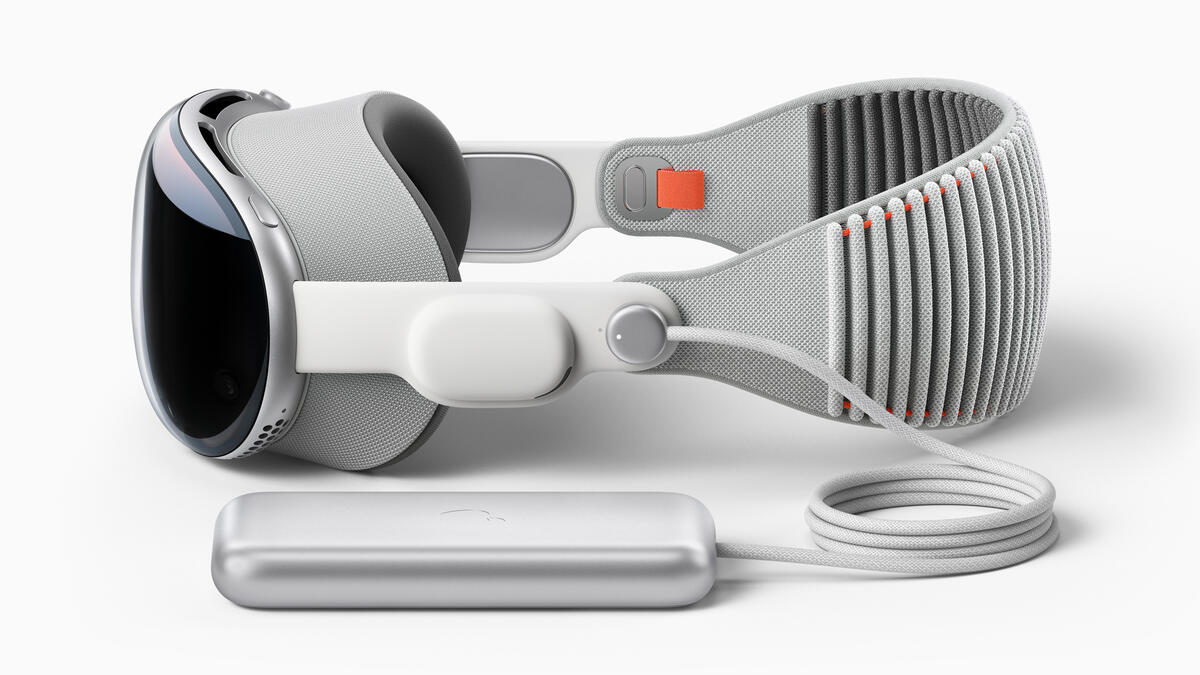The numbers, unsurprisingly, are impressive. Apple’s latest piece of technological wizardry, the Apple Vision Pro, is an AR/VR headset—the company prefers the term spatial computer—that packs a gobsmacking 23-million-pixel display into what looks like a pair of sci-fi ski goggles. (By contrast, many modern TVs only have 8 million pixels, spread out over a much larger surface area.) Put it on and you can see ultrarealistic 4K displays that appear to stretch 100 feet into the air. The retail price, $3,499 for a base model, is double the cost of a MacBook Pro.
All of that is worthy of applause, or at least a raise of the eyebrows. But will the Vision Pro end up mattering for the design industry?
I went to try out the device in Brooklyn the week after its splashy debut. Apple, which has reportedly spent billions to develop the Vision Pro, is keen to put marketing muscle behind its latest creation. As a result, a large section of the store had been carved out for sleek leather banquettes custom-built to try the device. Employees repeatedly asked me: “Are you excited?”
I don’t love heavy sales pitches, but after taking it for a spin—yes, absolutely, I found the Apple Vision Pro exciting. The ability to control a computer simply by moving your eyeballs and tapping your fingers in the air ends up being as intuitive as it is impressive. And the level of immersion the headset offers is wild. In one of the demo clips, which takes viewers inside a studio where Alicia Keys is recording a song, I felt so much a part of the “scene” that I reflexively leaned back so as not to invade her personal space.
It’s not at all difficult to imagine how the Vision Pro could become part of a designer’s toolkit. Imagine a version of SketchUp that allows you to rearrange furniture at life-size scale. Imagine, instead of sending a client a rendering to idly scroll through on a 3-inch screen, giving them something they could effectively be inside of.
If you look at the freshman class of companies debuting applications for the Vision Pro, many are clearly thinking the same thing. Probably the most high-profile is real estate platform Zillow, which has unveiled an app allowing users to take immersive home tours using the headset. Wayfair has also rolled out a Vision Pro app for its Decorify interior design tool—users can toggle to an AI redesign of their space while shopping for specific pieces. Other design-adjacent apps include ones made by Lowe’s and Planner 5D. More will surely follow.
Interestingly, tech pundits have been lukewarm on the Vision Pro. Most agree the technology itself is impressive but point to several key flaws. A big one is the price (the device is seven times more expensive than Meta’s Quest 3 headset). Another is more fundamental: What exactly is this thing for?

Both are fair points. The device is far too expensive for the average American to buy on a whim, and several reviewers have pointed out that the likeliest purchasers are professionals who would use it for work and the affluent who would buy it for fun. That’s a reasonable critique, but don’t those two demographics perfectly describe designers and their clients?
The existential issue—how widely useful it is—is the big question, and a difficult one to answer. No matter how well-designed it is, the Vision Pro is a headset, and like all headsets, it gets irksome to wear for extended periods. And though you can use it to do a lot—watch movies, write emails, Zoom with friends—it’s not yet clear to me that any of these applications are so much better done within a mixed-reality world than on an external smartphone or laptop.
I suspect that despite the considerable promise for designers, if the Vision Pro fails to catch on in a broader market, it will ultimately fizzle out in the industry as well.
That’s because in many ways, the real promise of the device is not so much the technical wizardry, but the potential that it could become an everyday piece of Apple’s seamless ecosystem. After all, there are other VR headsets on the market right now, many of them pretty good. But most designers don’t routinely use them, at least partially because there’s a lot of friction in making them part of a design process. If the client has one of these headsets at their home, great. But you have to figure out a way to continually send them workable files in the right format, communicating between your software and their device. If the designer has a headset, great. But then you have to drag the client into the office every time you make a change you want them to see.
Compare that with the ease of: “We were thinking of green for the dining room instead of blue. I’ll take a pic with my iPhone and send it over. You check it out on your Vision.” Part of the reason why people use FaceTime is not because it’s such a brilliant video-calling app. It’s because a lot of people have iPhones, and all iPhones have FaceTime.
Likewise, if a lot of people get Apple Vision Pros, designers should expect to play in that sandbox. Are you excited?




























